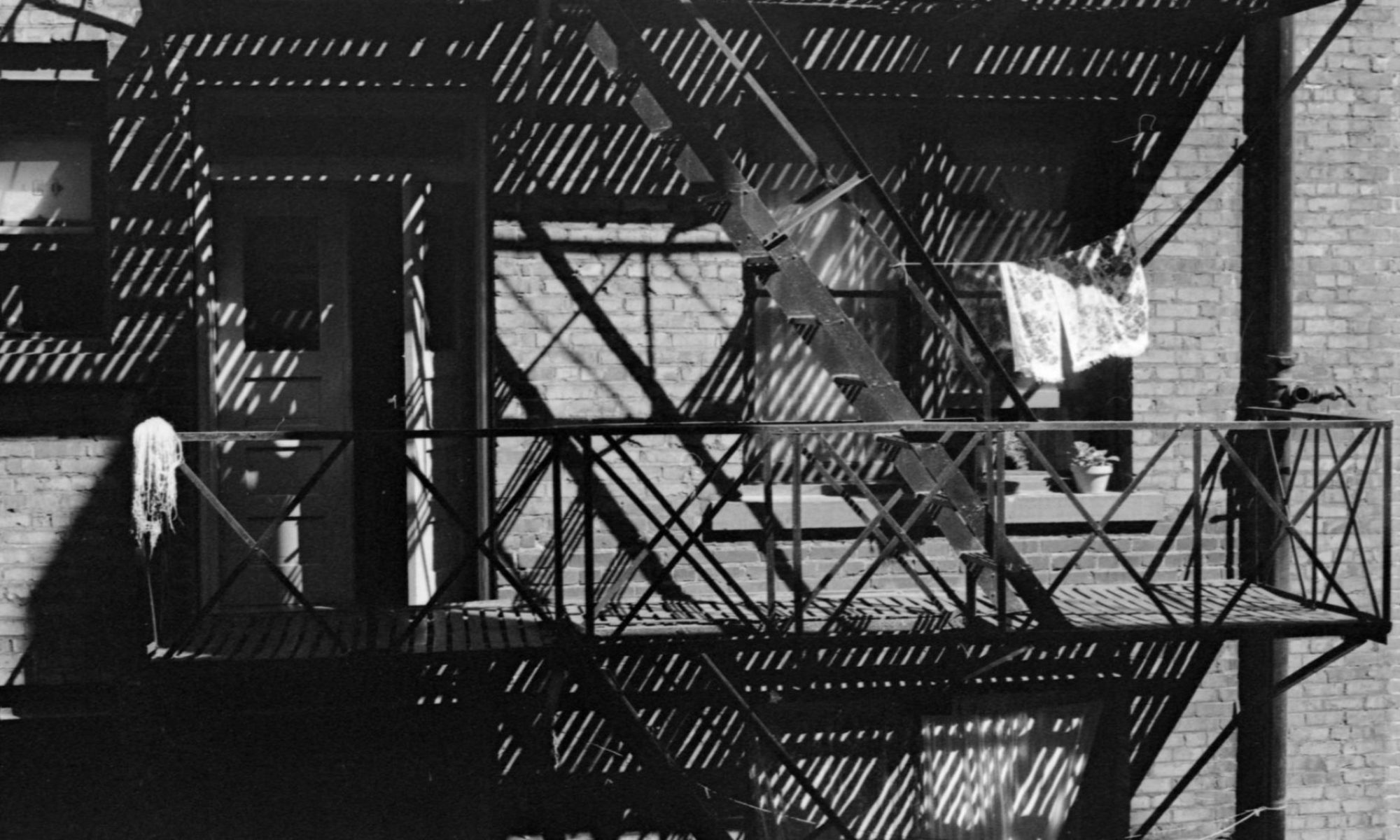Here, wherever possible, we include articles, catalogues, theses,  and other materials emanating from The Right to Remain project and its predecessors. Please note that these documents are intended for sharing with academic and community colleagues’ personal use and should not be distributed for any purpose.If you encounter a paywall or a broken link, please contact Jeff and he will be pleased to send you a copy.
and other materials emanating from The Right to Remain project and its predecessors. Please note that these documents are intended for sharing with academic and community colleagues’ personal use and should not be distributed for any purpose.If you encounter a paywall or a broken link, please contact Jeff and he will be pleased to send you a copy.
EXHIBITS
Continuous Fabric Revitalizing Japantown Resource (2015)
ACADEMIC PUBLICATIONS
Blomley, N., & Right to Remain Collective. (2021). MAKING PROPERTY OUTLAWS: Law and Relegation. International Journal of Urban and Regional Research, 45(6), 911-929. Click here for journal link.
Masuda, J., & Right to Remain Research Collective. (2021). Abandoning the SRO: Public Health Withdrawal from Sanitary Enforcement in Vancouver’s Downtown Eastside. Journal of Urban History, 00961442211018795. Click here for journal link.
Masuda, J., & Kobayashi, A. (2021). Participatory Research By/For the Precariously Housed in a Time of COVID-19. In COVID-19 and Similar Futures (pp. 357-363). Springer, Cham. Click here for journal link.
Masuda, J. R., Franks, A., Kobayashi, A., & Wideman, T. (2019). After dispossession: An urban rights praxis of remaining in Vancouver’s Downtown Eastside. Environment and Planning D: Society and Space, 0263775819860850. Click here for journal link.
Franks, A., Masuda, J.R., Kobayashi, A, and the “Revitalizing Japantown?”-Right to Remain Community Fair team. (2016). “Mobilizing the ‘Right to Remain’ in Vancouver’s Paueru-gai: An art-based participatory research intervention. In Zebracki, M. and Palmer, L. (Eds). Public Art Encounters: Art, Space, and Identity. Ashgate. Click here for e-book link.
Franks, A., Mori, A. Masuda, J.R., Lohan, A. and the Right to Remain Community Fair team. (2015) The Right to Remain: Reading and Resisting Dispossession in Vancouver’s Downtown Eastside with Participatory Art-Making. Feral Feminisms. 4. Click here for full article.
Masuda, J.R., and Bookman, S. (2016). Neighbourhood Branding and the Right to the City. Progress in Human Geography, Online First, 1-18. Click here for journal link.
Wideman, T., and Masuda, J.R. (2018). Assembling “Japantown”: A critical toponymy of gentrification in Vancouver, Canada. Urban Geography, Online First. Click here for full article.
Wideman, T. & Masuda, J.R. (2018). Toponymic assemblages, resistance, and the politics of planning in Vancouver, Canada. Environment and Planning C: Politics and Space. Click here for full article.
THESES
Marina Chavez (MA, Simon Fraser University, Ongoing).
Marina’s research focuses on understanding the role of tenant possessions in building trust, relationships and organizing with the precarity of the SRO hotels. Her research on possessions and hoarding emphasizes the role of tenants in current and future processes of home making and housing justice more broadly.
Aaron Bailey (MSc, Queen’s, Ongoing). Creating the “Non-Conforming” Alcogenic Landscape: Historicizing Vancouver’s Liquor License Moratorium for the Downtown Eastside as Dispossessory Public Health Practice
Aaron’s thesis research historicizes the City of Vancouver’s 1988 moratorium on the issuance of Liquor Primary licenses on the Downtown Eastside Oppenhimer District as a formalization of a longstanding and highly radicalized prohibitionist alcohol planning regime in the neighbourhood. Specifically, his project explores the relationship between the moratorium, the displacement of illicit drinkers, and SRO gentrification.
Aaron Bailey (Undergraduate thesis, Queen’s University, 2020). Back to my room / And, the bottle.”: Historical Perspectives of Alcohol Problematization, Control and Harm Reduction in Vancouver’s Downtown Eastside.
Alcohol is noticeably absent from the documented history of harm reduction in
Vancouver’s Downtown Eastside (DTES). Drawing largely from archival sources collected by the
Right to Remain, a housing-focused participatory research project in the DTES, this project aimed
to investigate the dominant and lived history of alcohol control in the neighbourhood between the
1960s and late 1980s. Historical narratives related to local control of neighbourhood alcohol
outlets by groups like the Downtown Eastside Residents Association (DERA), the detrimental
effects of the closure of the former B.C. Liquor store at 230 East Hastings, a longstanding wet
hostel administered by the City of Vancouver and the existence of an operational Managed Alcohol
Program (MAP) in the DTES in 1979 resurfaced through this archival analysis. Several short-lived
experimental programs were identified that responded to the unique placement of alcohol in the
DTES in pragmatic ways, and can be viewed as antecedent moments of modern alcohol harm reduction. The continuation and convergence of these programs into an early harm reduction-
adjacent movement was likely foreclosed upon by the arrival of neoliberalism to public health practice and local government in Vancouver. Many of these historical moments of innovation
would not become established practice in Vancouver until well after the arrival of harm reduction
to the DTES in the late 1980s. Instead, dominant responses to the “problem” of alcohol focused
disproportionately on reducing availability. The poetry and prose of DTES residents indicates that
these responses did not aim to address the complex causes of alcohol-related harms articulated by
local residents who were spoken-over, which included poor housing conditions, social isolation
and structural violence. Future research should continue to investigate the manner in which the
DTES was defined as a space of problematized alcohol use between the 1960s and late 1980s and
the manner through which these conditions were resisted by local residents.
Angela Kruger (MSc, Queen’s University, 2019). Remaining in Death: A Critical Ethnography of Death, Remains, and Community in Vancouver’s Downtown Eastside. (click here for full thesis).
Communities dwelling in Vancouver’s Downtown Eastside have long been the target of dispossessive strategies. In the earliest days of the city’s development, the Squamish, Musqueam, and Tsleil-Waututh Peoples were violently removed in the name of ‘civilization’ and for the advancement of the Canadian settler colonial state. In 1942, the Japanese Canadian community who had been living in Paueru-gai (Powell Street) were forcibly uprooted in the name of national security. In the 1960s, the Black community living in Hogan’s Alley were displaced in the name of urban renewal. In 1986, working-class and other tenants who had been living in the Downtown Eastside’s Single Room Occupancy hotels and rooming houses were suddenly evicted for the World Exposition. In recent decades, the Chinatown and low-income communities currently dwelling in the Downtown Eastside have fought an onslaught of gentrification threatening to develop condominiums for white, middle-class, potential-home-buyers at the expense of current residents. In 2014, through a research project titled “Revitalizing Japantown?”, which questioned the toponym “Japantown” as a term deployed by the municipal government for gentrifying the Downtown Eastside in the name of ‘revitalization,’ community members, activists, and scholars articulated the right to remain as an activist counter-brand. Since then, the right to remain has fuelled housing activism in the Downtown Eastside, particularly with the Downtown Eastside (DTES) Single Room Occupancy (SRO) Collaborative, an organization dedicated to improving conditions in the neighbourhood’s SRO hotels as a political matter and practical means of ensuring that the low-income community remains in the neighbourhood. While the right to remain has informed much anti-gentrification activism, this thesis recasts the right to remain in light of the continuous death endured by the community dwelling in the Downtown Eastside. Drawing on eight months of ethnographic embeddedness in the neighbourhood (May 2018 – January 2019), 12 unstructured interviews, as well as theories of haunting and urban geography, I argue that those who remain in the Downtown Eastside include not only the living, but also, and importantly, the dead. I reveal how the dead complicate the right to remain and the Downtown Eastside in ways that strengthen activism and imagine beyond justice.
Magnus Nowell (MSc, Queen’s University, 2018). Exploring Politics, Practices, and Discourses of Harm Reduction in the Overdose Crisis: the Case of the Tenant Overdose Response Organizers and the “Therapeutic Riskscape.” (click for link to permissions page for full thesis).
Harm reduction, its aspirations, politics, and discourses, have changed dramatically since its origins as a grassroots, drug user-led movement in Canada. Public health played a critical role in helping implement harm reduction, but in doing so has aligned it in ways that have accommodated neoliberal priorities and technocratic discourses, thus contributing to its depoliticization as a social movement. By absconding from meaningfully attending to social determinants of health, which underlie drug-related harm in favour of risk-mitigating individual approaches, public health’s implementation of harm reduction has fallen short in challenging social injustices and inequities at the root of Canada’s legacy of drug criminalization. The arrival of fentanyl and the overdose crisis in Vancouver’s Downtown Eastside (DTES) has proven to be a turning point in this history by leading marginalized tenants of privately-owned single room occupancy (SRO) hotels to organize overdose response for one another. In December 2016, the Downtown Eastside SRO Collaborative Society, a housing advocacy organization, partnered with public health to develop the Tenant Overdose Response Organizers (TORO) program, which uses community organizing to support these efforts. Through participant observation and key stakeholder interviews undertaken between November 2017 and April 2018, this research explores harm reduction’s politics, practices, and discourses through a case study of the novel, peer-led TORO program. I found that despite the hesitancy of public health to support housing advocacy as a critical component of harm reduction, TORO has supported SRO tenants in their responses to oppressive physical, social, and structural environments. My analysis of the work of TORO within the broader context of the DTES has also supported the development of the “therapeutic riskscape” as a theory that attempts to provide an approach to harm reduction that recognizes the recursive relationship between community-driven responses to structural environments and relational experiences of place-based healing.
Trevor Wideman (MA, Queen’s 2015). (Re)assembling “Japantown”: A critical toponymy of planning and resistance in Vancouver’s Downtown Eastside (click for full thesis).
For many, toponyms, or place names, appear to provide objective descriptions of locations on the earth. But for geographers, names and naming practices are imbued with meaning, and a recent literature of critical toponymy has emerged that studies and recognizes place names as discursive agents of power and resistance that perform active roles in the ongoing production of place. However, the critical toponymy corpus had produced very little theoretically rich empirical research focusing how urban planning and policymaking processes mobilize place names, or how residents fight against such activities. This thesis fills that lacuna, first by generating a novel theoretical framework (toponymic assemblage) that describes the emergent, relational, and spatially grounded properties of place names. It then outlines a robust, extended, and mixed method case study approach that uses archival/newspaper documentation, discourse analysis, and interview data to form a historically based, theoretically driven, and structurally aware study of toponyms in relation to planning and policymaking. The thesis then presents two empirical case studies based in Vancouver, Canada’s impoverished Downtown Eastside (DTES) that are centred around the name “Japantown,” a toponym that recalls the neighbourhood’s long-time inhabitation by a community of Japanese Canadians who were forcibly uprooted from the Pacific coast during World War II. Specifically, this thesis situates contemporary neighbourhood conflicts within a historical context by constructing an interwoven analysis of toponymic assemblages in the DTES (including “Japantown”), noting how they emerged over time in relation to interventions such as planning, policymaking, the media, and activism while highlighting their fluid, malleable, and potential qualities. It then focuses on a recently enacted Local Area Planning Process (LAPP) in the DTES to illuminate how toponymic assemblages like “Japantown” were mobilized through planning to change understandings of place at the expense of current low income residents. The thesis concludes by considering the theoretical and positional limitations of the research, then suggests directions for future study and activism by highlighting how a more complete understanding of toponymic power and its limits can inform rights-based engagement among disparate groups.
Jenna Drabble (MA, University of Manitoba 2015). The Right to Food and the Right to the City: An argument for ‘scaled up’ food activism in Vancouver’s Downtown Eastside (click for full thesis).
As food insecurity increases among socio-economically marginalized populations, community based efforts to address these issues have received particular attention for their potential to promote justice in food systems. This thesis presents a case-study analysis of right to food (RTF) activism in Vancouver’s Downtown Eastside (DTES), a community where decades of failed government policies and economic disinvestment have produced high levels of poverty as well as organized resistance and activism. I explored this localized movement through key stakeholder interviews (n=17) and 10 months of participation at a community-based organization. My findings suggest that local efforts to organize around RTF may have had some success in challenging the dominant discourse and practices associated with the entrenched charitable food model. However, these efforts are limited in their ability to ‘scale up’ this work to transform the systems that produce uneven urban food environments. I argue that the barriers to food access in the DTES are inextricably tied to broader historical contestations over urban space produced by processes of capitalist urbanization. Drawing on Lefebvre’s ‘right to the city,’ I suggest how RTF activism in the DTES could benefit from linking more explicitly to the collective struggles facing wider efforts to reclaim the city.
Scott McCulloch (MA, University of Manitoba 2014). Reimaging urban space: the festival as a (re)branding vehicle for inscribing Vancouver’s Downtown Eastside as Japantown (click for full thesis).
This research study uses a synthesis of theoretical frameworks from sociology and geography to develop critical branding theory that guides an analysis for how urban space is branded with a narrative and identity. The project investigates how a long running Japanese Canadian culture and arts festival called the Powell Street Festival that takes place in Vancouver’s Downtown Eastside acts a branding vehicle and reimages urban space with commemorative aspects. The study consisted of twelve qualitative interviews, document and archival research, and a participant observation. Findings suggest that the Powell Street Festival performed as a vehicle for reimaging space, and through subtle-commemorative branding, Vancouver’s Downtown Eastside has been rebranded, in part, with Japanese Canadian facets. The Japantown brand coupled with the high potential for urban revitalization of this space, leads to a concern over the possible social and physical displacement of current Downtown Eastside residents, many of whom are low-income persons.
NEWSLETTERS


One Reply to “THE THINGS WE’VE MADE”
Comments are closed.